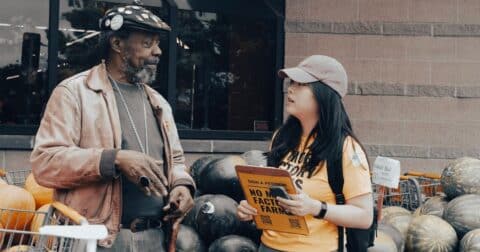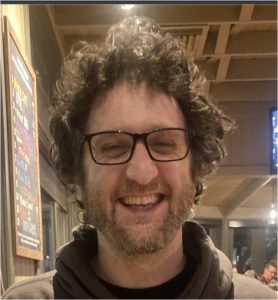News
Sentient Impact Report 2025
Policy•1 min read
Explainer
One ballot measure passed — Measure J and a Denver ordinance didn’t. What’s next?


Words by Seth Millstein
In the recent election, three localities in the U.S. voted on ballot propositions to outlaw factory farms or slaughterhouses within their borders. The results were decidedly mixed, with the two most significant measures failing, but the third measure passing. The effort to ban factory farms and slaughterhouses is still alive and well despite these setbacks — but where does the movement go from here?
Two California localities voted on ballot propositions to ban factory farms: the city of Berkeley and the county of Sonoma. In addition, residents of Denver, Colorado voted on a measure that would prohibit slaughterhouses from operating within the city limits.
Measure J, the Sonoma initiative, failed by a wide margin, and Initiated Ordinance 309 in Denver failed by a slightly smaller margin. But Measure DD passed in Berkeley, making it the first U.S. city to ban factory farms.
“I think pretty much everyone was aware that we were facing an uphill battle,” Cassie King of Direct Action Everywhere, an animal liberation organization that helped organize and run the Yes on J Campaign, tells Sentient. “But we also are disappointed that we lost with 15 percent of the vote.”
The success of Measure DD notwithstanding, these results were more disappointing than encouraging for animal rights activists, as Measure J and Ordinance 309 would have had much bigger impacts than Measure DD will have. Animal agriculture is a huge business in Sonoma County, and Measure J would have potentially affected a little under two dozen of the county’s farms. Denver has only one slaughterhouse, but it would have been shuttered had Ordinance 309 passed.
Berkeley, on the other hand, isn’t currently home to any factory farms. This means that Measure DD’s passage won’t have any immediate impact on the city — although it’s also not entirely symbolic, for reasons we’ll get into.
King argues that two factors were instrumental in Measure J’s failure: public confusion over what constituted a “factory farm,” and misinformation disseminated by Measure J’s opponents, who raised almost $2 million to defeat the measure.
The Yes on J campaign used the federal government’s sizing criteria to determine which CAFOS the ballot proposition would apply to, but King says that the complex nature of this criteria created confusion on the part of the voters — and an opportunity for misinformation by Measure J’s opponents.
“The CAFO definition is confusing, and more confusing for people than we expected,” King says. “Because there are multiple criteria to the definition, and because it was just something people weren’t really familiar with, I think it was confusing for people, and that made it possible for the misinformation and fear-mongering to be more convincing.”
King says that opponents of Measure J misrepresented the ballot proposition in their campaign against it, and dramatically overstated what impact the measure would have had on Sonoma County.
“They sent mailers to people in Sonoma County saying that Measure J would immediately shut down 60 organic dairy farms, which is absurd because Sonoma County does not have 60 dairies, let alone 60 organic dairies,” King explains. There were 48 dairies in the county, according to a 2023 report. “They’re not all organic, and Measure J would have impacted six of them.”
But opponents of Measure J didn’t just pull these numbers out of thin air.
They pulled them from a study that the Chico Agribusiness Institute, a division of California State University Chico, carried out to determine Measure J’s economic impact.
The Chico study was frequently referenced in news articles about Measure J. But this was not a wholly unbiased study: The Chico Agribusiness Institute exists, in part, to “serv[e] the needs of agribusinesses in California,” according to its website.
More to the point, the study contained an enormous methodological flaw: it based its conclusions on a scenario wherein all livestock farming was banned in Sonoma, which is not what Measure J would have done. A study by the Yes on J campaign found that in actuality, only around 21 CAFOs in Sonoma would have been impacted by the measure — less than one percent of the county’s 3,000-plus farms.
The No on J campaign made several other dubious claims about the measure’s impact. The website states that the passage of Measure J would have increased greenhouse gas emissions, as it would have required trucks to drive farther to deliver animal products. That claim is almost certainly false. When it comes to climate pollution from the food system, factory farms themselves emit far more greenhouse gasses than the trucks that carry meat, dairy and eggs — and the foods they produce must also be transported.
The No on J website also claimed that Measure J would have increased local prices of dairy and milk — a claim that agricultural economics professor Daniel Sumner of UC Davis says is false, as other farms in the state would have easily filled the production gap.
“People need to know that industries are allowed to lie to you in political campaigns,” King says. “And that’s a real challenge for our movement, and others that rely on people getting the facts.”
The No on J campaign didn’t respond to Sentient’s request for comment.
Despite the failures of Measure J and Ordinance 309, election night did have one silver lining for animal rights activists: Berkeley’s Measure DD, which passed with over 60 percent of the vote.
Granted, Berkeley doesn’t have any CAFOs — but it did until very recently. For decades, the city was home to Golden Gate Fields, a popular horse racing track. You wouldn’t normally think of a racing track as a factory farm, but this facility housed up to 1,400 horses at a time, which made it a large-sized CAFO under the federal government’s guidelines.
In June, the owners of Golden Gate Fields closed the track permanently for unrelated reasons. But if they hadn’t, the passage of Measure DD would have done it for them. More importantly, the success of Measure DD ensures that the facility won’t be converted back into a CAFO in the future, and that no other factory farms will be erected in Berkeley.
On a more symbolic level, the passage of Measure DD proved for the first time that banning factory farming via ballot proposition is possible, under the right circumstances.
Although Measure J and Ordinance 309 didn’t pass, activists behind the measures expressed optimism for the future of their movements.
Aidan Kankyoku of Pro-Animal Future, which sponsored Ordinance 309, tells Sentient in an email that “spirits are very high” in the organization, and that they’re “more excited than ever to continue to build the momentum created by the Denver campaign.”
“Through this measure, the movement’s support in Denver went from perhaps five percent (the number of people who are vegetarian) to 36 percent, by taking the conversation out of a purely consumer context and introducing it to civic life,” Kankyoku writes. “This creates a blueprint for ambitious animal advocates to dramatically change the dynamic in our struggle against the factory farm industry.”
King says that the failure of Measure J, while disappointing, was also a valuable learning experience for those who want to ban factory farms.
First and foremost, the intense reactions and media coverage of Measure J showed that ballot propositions, simply by existing, can be excellent tools for bringing public attention to an issue.
“One positive thing we learned is just there’s a heck of a lot of conversation generated by getting something on the ballot,” King says. “Insofar as you’re seeking an awareness uptake or an educational campaign, this can be a really effective tactic.”
The measures drew attention to factory farms specifically, and forced many people to think about an issue that might otherwise have not been on their minds.
“Hundreds of thousands of people voted, and had to ask themselves where they stand on this issue, which requires looking into the issue, knowing the facts, gauging those facts against your own values, and seeing where you stand,” King says.
King tells Sentient that several organizations only tangentially related to factory farms, such as the Sonoma County Beekeeper’s Association, reached out to the Coalition To End Factory Farming to learn more about the measure — another indicator of the massive public interest generated by the campaign.
Lastly, although Measure J failed by a significant margin, the campaign’s spending was actually more efficient than the No on J’s campaign, given the amount raised and the vote totals.
“We got more votes per dollar,” King says. “I don’t know how much weight that carries, but it is nice to know that despite being outspent so much, we had tens of thousands people see through the humane-washing and greenwashing from the industry, and still vote for compassion.”
King tells Sentient that, in the wake of Measure J’s failure, she and her fellow anti-CAFO activists are “convening different coalition partners and volunteers and various groups to debrief and go through what we learned and discuss what’s next.”
Although Direct Action Everywhere isn’t currently spearheading any future ballot propositions to ban factory farms, King says that the organization “ will be continuing to work to end factory farming in Sonoma County,” and that other members of the Coalition to End Factory Farming “are really focused on just continuing the momentum from Measure J, now that there is more awareness in Sonoma County.”
“We have to figure it out, and learn from it, and continue to try what we can when we’re facing such a powerful industry. So mostly, I think people are in good spirits, and are eager to figure out what’s next.”